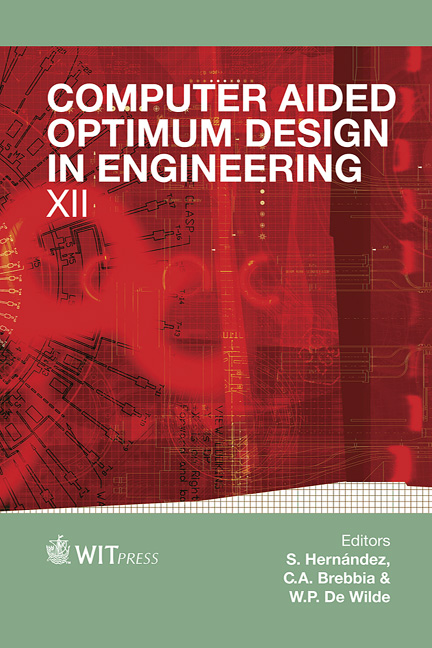Isogeometric Shape Sensitivity Analysis
Price
Free (open access)
Transaction
Volume
125
Pages
12
Page Range
119 - 130
Published
2012
Size
279 kb
Paper DOI
10.2495/OP120111
Copyright
WIT Press
Author(s)
F. Navarrina, H. G´omez, J. Par´ıs, I. Colominas, X. Nogueira & M. Casteleiro
Abstract
On a regular basis, engineering analysis requires stating and solving systems of partial differential equations (PDEs). The most powerful and widely extended techniques for solving PDEs are the so-called Weighted Residuals Methods. To this group belong, among others, the Finite ElementMethod (FEM), the Boundary Element Method (BEM), the Finite Volume Method (FVM) and the Mesh-Free Method (MFM), as well as the many different formulations included in each of these categories. The new IsogeometricAnalysis (IGA) methodswere proposed by Hughes et al. in 2005, and it is our belief that they really deserve special attention. The key idea of IGA is to use a previously generated CAD model for discretizing both the geometry and the solution to the problem being analyzed. In return for some minor drawbacks, IGA offers a number of major advantages that make the technique specially attractive and promising in comparison with standard FEM, BEM, FVM and MFM formulations. In this presentation we will state a general formulation for the sensitivity analysis of Weighted Residual Methods, both for linear and non-linear problems with constant or varying geometry. The effects due to variation of geometry are addressed by defining a generic procedure for integration in manifolds on the basis of the metric tensor concept. The proposed approach leads to compact and relatively simple expressions to obtain directional derivatives of arbitrarily high order. The resulting scheme can be easily applied to IGA formulations, its implementation being quite a straightforward task. Finally, one application example is presented. Keywords: IGA, isogeometric analysis, high order shape sensitivity analysis.
Keywords
IGA, isogeometric analysis, high order shape sensitivity analysis.





